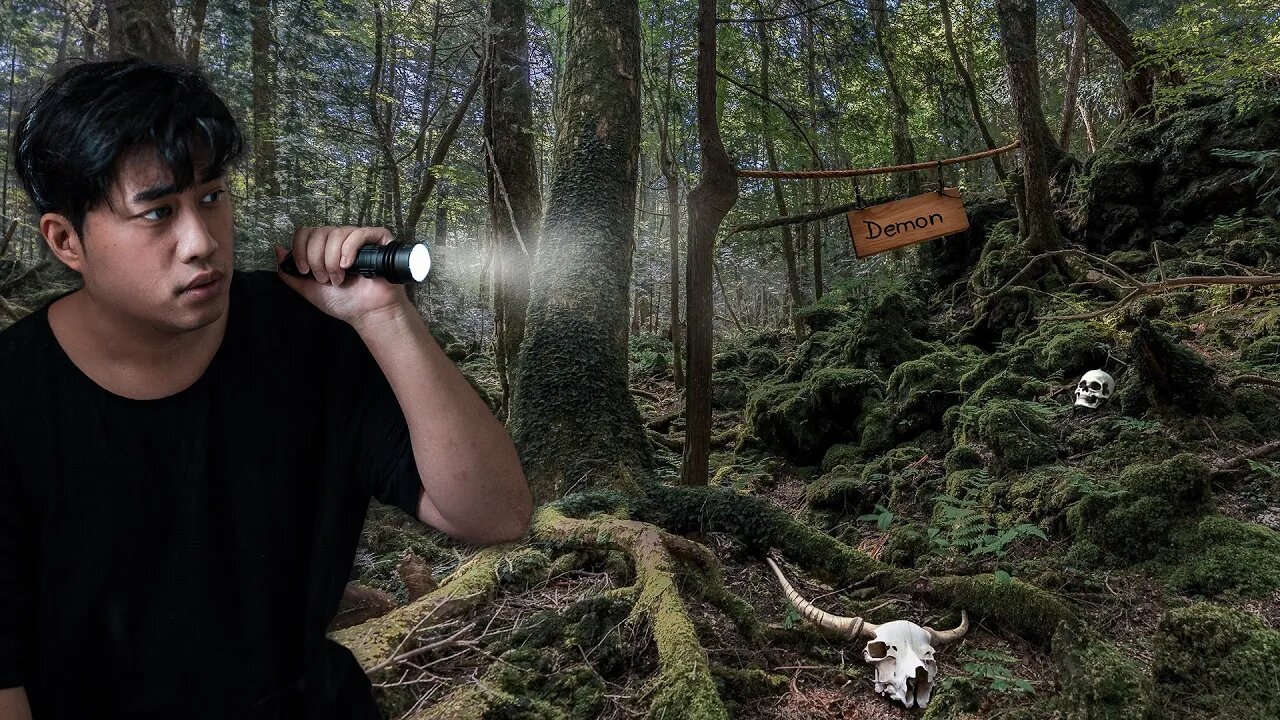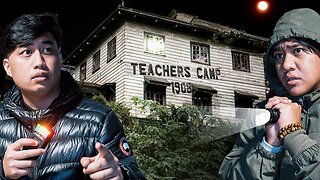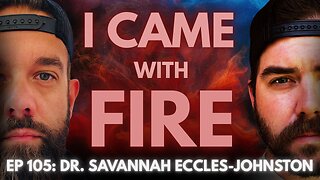Premium Only Content

Aokigahara 青木ヶ The Most Haunted Forest In The World | JAPAN (BANNED)
In the year 864, Mount Fuji erupted violently for six months, resulting in the burial of entire villages under a massive field of hardened lava. Over the course of a millennium, a dense forest grew upon this lava field, casting its shadow on the snow-capped volcano. Officially known as Aokigahara, but commonly referred to as jukai, meaning "sea of trees," this forest became a popular hiking destination a few hours away from Tokyo in the Yamanashi prefecture. However, not everyone ventured there for the fresh air and breathtaking views. Aokigahara held a darker allure, for it had gained a dark reputation in being the most haunted forest in the world.
Its been reported that between 2013 and 2015 alone, there were over 100 committed deaths in the Aokigahara forest, according to the Yamanashi government. Those who tragically chose to end their lives in this mist-shrouded woodland often traveled from distant places to join the countless others who had met the same fate. The Japanese government, in an effort to discourage such acts, ceased publishing statistics.
But how did this serene and picturesque forest at the base of Mount Fuji become so intertwined with deaths?
One theory dates back centuries to a morbid practice carried out by certain Buddhist monk sects.
In Japan, Mount Fuji and its surrounding forests, including Aokigahara, are considered sacred spaces. For more than a millennium, ascetic Buddhist monks would retreat to these forests to engage in extreme forms of self-denial and meditation that eventually led to their deaths.
According to a particular tradition, these monks would meditate in the forest for 1,000 days, subsisting solely on leaves and bark. Afterward, they would willingly be "buried alive" to continue their meditation in underground crypts. Their ultimate aim was to transform their bodies into sokushinbutsu, a type of mummy, while still alive. Although 18 of these "self-mummified" monks' remains are displayed in parts of Japan, scientists believe they were actually mummified after their deaths.
Could this ancient form of ritual provided a model for contemporary Japanese individuals seeking to escape their modern lives by vanishing into the forest? Or is there a more direct connection?
Aokigahara's prominence in popular culture played a significant role in its association. In 1960, Japanese author Seicho Matsumoto published a short story called "Tower of Waves," revolving around star-crossed lovers separated by circumstances beyond their control.
However, the book that truly propelled the "Aokigahra forest" to fame was published in the 1990s. Author Wataru Tsurumi wrote a manual an unadorned guide to ending one's life. Published exclusively in Japanese in 1993, this 198-page book discusses the merits and drawbacks of various methods.
"Undoubtedly, the book generated significant controversy "It even included a section about Aokigahara forest, describing it as 'the perfect place to pass away.'"
The manual depicted Aokigahara forest as an ideal setting for disappearing without a trace. No loved ones would stumble upon the lifeless body; instead, one could embark on a journey and never return. It even has been reported that many bodies found in the forest were discovered with copies of the manual."
Western perspectives often exhibit a skewed perception of suicide in Japan, envisioning stoic samurai committing ritualistic seppuku to preserve their honor or World War II kamikaze pilots crashing their planes into enemy ships.
Apart from the historical accounts and myths, it is believed that there exists a gate to hell and a demonic entity within the Aokigahara forest. According to Japanese popular belief, if someone dies while consumed by deep feelings of hatred, anger, sadness, or a desire for revenge, their soul becomes trapped in this world and continues to wander. These souls, known as yurei, appear to those affected by the curse or who cross their path. Yurei are also depicted in various modern cultural references, including movies. Unlike in Western horror movies, where ghosts typically seek specific resolutions to find peace, yurei do not desire anything specific. They simply wish to have their curse lifted or conflicts resolved.
Some Japanese spiritualists suggest that the trees in the haunted forest have absorbed malevolent energy over the course of centuries.
■ SHOP MY CLOTHING LINE http://frdmxwndr.com
■ FOLLOW ME
Instagram http://instagram.com/steveronin
TikTok https://www.tiktok.com/@stevexronin
Twitter http://twitter.com/steveronin_
Facebook http://facebook.com/steveroninofficial
■ FAN MAIL ADDRESS
PO BOX 609
Norfolk, Massachusetts
02056
■ For Business Inquiries/Sponsorships contact me exploringwithsteve@gmail.com
■ My Assistant Video Editor @SmoothieOperative
#Abandoned #Exploration #Steveronin
-
 47:27
47:27
Steve Ronin
1 year ago $0.11 earnedOvernight In The Most Haunted Resort In The Philippines (Teachers Camp)
8.81K2 -
 5:39
5:39
Talk Nerdy Sports - The Ultimate Sports Betting Podcast
7 hours agoSolo Sharp Shooter: 10 Data-Driven Locks for May 10
37.7K2 -
 32:54
32:54
Stephen Gardner
9 hours ago🔥Trump's SHOCKING move around CONGRESS means BIG ARRESTS coming!
69.5K134 -
 1:33:30
1:33:30
I_Came_With_Fire_Podcast
1 day agoCrony Capitalism, Culture Collapse, and the President Who Ruined America
56.5K42 -
 23:38
23:38
marcushouse
12 hours ago $4.66 earnedFinally Info Dropped About Starship Flight, and Massive Changes Coming to Starbase!
58.2K22 -
 13:27
13:27
Bearing
11 hours agoGo On… Say The N-WORD | Black Activist EXPLODES on Piers Morgan Show 💥🤬
63.8K111 -
 13:32
13:32
RTT: Guns & Gear
1 day ago $3.13 earnedStay Prepared With This Chest Rig - Citadel Defense Spectre
51.8K10 -
 40:10
40:10
Chrissy Clark
2 days agoWomen Demand Conclave Inclusion, Disney Works With Anti-Gay Nation, & MORE I Underreported Stories
39.7K9 -
 57:31
57:31
Trumpet Daily
1 day ago $5.12 earnedWhat to Make of an American Pope - Trumpet Daily | May 9, 2025
33.7K13 -
 55:21
55:21
The Bryce Eddy Show
2 days ago $1.82 earnedChad Prather: The Invasion of Texas
25.9K8